Welcome to the Silver Bank!
The journey, the adventure, and our first day with the Humpback Whales
For ten years now, my friend Gene has told me about his annual pilgrimage to the Silver Bank to swim with the Humpback Whales in the Marine Mammal Sanctuary of the Dominican Republic. He first went as a crewman on one of the boats, then a few years ago got the opportunity to acquire one of the three permits issued by the Dominican Republic to take people to encounter the whales on the Silver Bank. This was his fourth season operating Conscious Breath Adventures, and we finally got our chance to go on the last trip of the year, from April 2-9, 2011.
Most North Atlantic Humpback Whales come to the Caribbean each year to mate and bear their young, and thousands of them are concentrated on the relatively small Silver Bank, about 70 miles north of the Dominican Republic. It is like whale soup out there, and while they do not feed at all, they do all kinds of other interesting things. The Dominican government recognized this very special place with the first conservation sanctuary in the world in 1986, and has more recently expanded the Sanctuary and strengthened the protection laws. They allow the three whale encounter operations to run a limited season each year, with a small number of people and very strict rules about how humans can interact with whales. One condition of operation is that space must be provided on occasion for Dominican whale researchers to travel to the Silver Bank and conduct their business, and on our trip we were lucky to be accompanied by Oswaldo Vasquez, the Dominican government's premier whale researcher, and Amy Kennedy from NOAA's National Marine Mammal Lab. They were aboard to tag whales with satellite tracking devices in order to learn more about their movements around the Caribbean and along their migration routes. Do not let anyone tell you that whale scientists are boring!
It is interesting how Gene, running Conscious Breath Adventures, and Oswaldo, representing the Dominican government's Marine Mammal Sanctuary, share the same overall goals: raising awareness about issues related to whales, the oceans, and ultimately, all of us. It would be impossible to visit the Marine Mammal Sanctuary of the Silver Bank and come away unchanged, and I hope the story, pictures, and video from our experience can contribute in some way. Enjoy!

Getting To The Silver Bank
We rose early Saturday morning to drive to Miami and then fly to Puerto Plata in the Dominican Republic, and right away I appreciated the hospitality of the island. They did not seem to care very much what any pieces of paper said, but wanted to ensure that each visitor received a welcoming shot of rum right away, and that the lines kept moving. That's my kind of airport. A taxi took us over to Ocean World Marina, where we found our home for the next week, the MV Sun Dancer II, along with the two other vessels that run whale trips to the Silver Bank. The construction, landscaping, and facilities at Ocean World were impressive, but the most commonly used word in describing the Casino was "garish." I suppose casinos are supposed to be a bit that way, but the design looked a bit like Disney World crossed with Las Vegas.
We walked out to the boat, but no one was around on deck, and we were not really supposed to be there for another hour or so, so we stood around on the dock for a moment, trying to decide what to do. I decided that since Gene would get in trouble if we misbehaved, I might as well begin torturing him early, so we helped ourselves aboard, went up to the undefended bar, and grabbed some Cokes from the refrigerator. We met Joel Simon from Sea For Yourself, who runs snorkeling trips in exotic locations around the world and had brought a group down for this trip. He wandered off and found the ship's Cruise Director, Brandon Shannon, who greeted us and went off to fetch Gene.
Was all that lighting really necessary? I guess so. It did clash a bit with Gene's welcoming address to the passengers that evening, in which he explained what we would be doing and how it relates to the name of his company, Conscious Breath Adventures. Whales are conscious breathers, meaning they never fully go to sleep and they choose when to take every breath. He wants us to swim with "sleeping" whales, whose brains are only half asleep, and he wants to raise our own consciousness about how they live and how we as individuals can make choices in our lives to help protect them.

We also met the crew, who were fantastic. From left to right, Capt. Gene standing apart, then assistant chef Carlos, who seemed to do a lot more than just help the chef, Cruise Director Brandon, a great asset for the ship, Chef Jerry, the most important man aboard who outdid himself with each meal, Captain Eddy, who always had a smile and the respect of his crew, Stewardess Barbara, who was immediately everyone's best friend, Terence the Engineer, whose talents were not limited to fixing things - he poured a great drink, and Tender Driver John, a real character and great fun out on the boats and on the radio, where he famously told us to look for whales "between port and starboard." Sorry, John, no one is going to forget that line any time soon.
Not pictured were Night Watch crewman Scooby, a serial hugger and perhaps the friendliest person on the planet, and Conscious Breath Adventures' other in-water naturalist, Clare Omodei, who was injured and was standing back operating cameras for this trip. A huge, special thanks from all of us is due to Brandon, a very experienced whale encounter operator who was able to fill in and do Clare's job of guiding us to the whales in the water, in addition to doing his own job. We had a great trip, ate delicious food, and the boat was clean and organized. That cannot happen without a great Captain and crew, so thanks to you all!
After a delicious dinner featuring lentil soup and chicken with creamy mushroom sauce, we retired for the night. They had told us that the boat would be departing around 11 pm, but no one mentioned that the pneumatic starters for those big diesels, located more or less directly beneath my bed, sound a lot like alarms. When the first one went off I nearly hit the ceiling until it was followed immediately by the rumble of the engine and I realized what it was. It took a while to settle down and fall back asleep.

I woke up a bit before sunrise and decided not to try to spot whales from my bed, as Gene had told us we would be able to do. I headed out to the bar on the Lido deck and grabbed a Coke for a caffiene fix, as coffee was not yet brewed. The whale watching tenders, Trini and Bago, were bouncing and sliding along behind us at ten knots, and I could see why they used heavy tow lines connected to two strong stem fittings on each boat. I headed on up to the upper deck for a better view, and soon Gene appeared and told me we were coming up onto the Silver Bank and there would be whales appearing around us. Sure enough, we started seeing spouts in all directions as we cruised along and chatted. Gene was visibly relieved that the stars of the show had not yet migrated north in large numbers. I later learned from Oswaldo that some hang around until June.
While we were watching whales up top, the rest of the boat was stirring to life. We went down to find the coffee and Continental breakfast ready in the main salon, and Barbara going around taking our hot breakfast orders. I asked for ham and eggs, then went back upstairs to watch as the ship slowed down to approach the mooring area.

The Silver Bank reef on the northeastern edge of the bank offers some protection for the boats on their moorings, but it is far from being a protected anchorage. The water ranges from 30 to 100 feet deep, and there are enormous coral heads scattered all around that come right up to the surface. The boats attach moorings to the bottom in the area where the density of coral heads makes a nearly complete wall to block the Atlantic Ocean swells, but they must stay far enough out to have room to swing without hitting anything. The countless individual coral heads are uncharted but are easy to see if you are looking, so several crewmen were on deck watching for them as the boat approached the mooring.
When we got close, Brandon stood out on the bow pulpit and snagged the mooring lines with a grappel hook, hung them over the stem post, and we had arrived at our home for the week. It's always a great moment when the main engines shut down, and I decided to celebrate by going back inside for breakfast. After our meal, Gene gave us our welcoming briefing on proper whale "soft in-water encounter" etiquette and technique. While the simple description is "swimming with whales," the real goal is to float peacefully in a small group as the whales swim with us. Gene looked directly at me as he explained that there would be no free diving descents toward the whales at all. Gee, I wonder why?

Our first order of business for the day was a short snorkel off the back of the boat, just to make sure that everyone's equipment was in working order and all had proper weight on to compensate for wetsuit bouyancy. Brandon showed us how to enter the water without making a splash, and how to sidestroke across the surface to avoid making a lot of splashing with our fins. Gene and the crew emphasized to us that the whales are curious about mellow, slow moving humans on the surface, but are easily unsettled by a lot of activity and will move away. To have a successful swim with the whales, we had to stay calm and still, moving around and splashing as little as possible.
I thought Joel from Sea for Yourself looked pretty funny perched on the dive platform wearing what appears to be a Tyvec painting suit, so I had to snap this picture. I guess it is really not nice to publish pictures of people just because you think they look funny, so sorry, Joel!

We had lunch and the crew brought the tenders up alongside the ship for our afternoon whale watching mission. It was about this time that I first took notice of the activities of the scientists we had on board. What is that crazy girl doing? Well, that's Amy, and she is testing out her harness. The plan is, while we eat lunch each day, Amy and Oswaldo will go out in the tender to dart whales with small satellite tracking devices. That is easier said than done, as it is necessary to hit the whale from above, just behind the dorsal fin. So, that girl is about to ride up on the bow of that boat in 100' deep water and pretty rough conditions as it approaches whales on the surface, then, when the boat is very close to the whale, she is going to accurately fire a dart at the whale using a ship's line-throwing gun. It's an overgrown air rifle, powered by a SCUBA tank.
I was kind of surprised to learn what they planned to do, since we had been lectured on avoiding doing anything that might disturb the whales. Oswaldo Vasquez is the head Dominican scientist in charge of protecting whales, and the man who would have his government come down hard on any whale watch operator who in any way harassed the whales, so it was a bit of a paradox that he was the one out pursuing them in a motorboat and assisting Amy in shooting darts at them! Amy explained to us that the presence of the boat does indeed disturb the whales, but surprisingly to me, they often do not react at all to being shot with a dart. Their thick skin and blubber is extremely tough, and when competing for position next to a female, males will ram each other into coral heads. That's gotta hurt, so I guess a little dart really is nothing in comparison. As for disturbing them with the boat, it is a subject of some contention, but there are good reasons for doing it.
The satellite tags have a battery life of about six months in this application, but Amy told us that whale brawls sometimes result in the tags falling off in a couple of months. Each tag is expensive and difficult to place on a whale, but the information they yield about where the whales actually go is very valuable to scientists who want to protect whales. Ship strikes are a major threat to whales worldwide, and Oswaldo explained to us how tracking information is being used to help route shipping traffic around heavy concentrations of whales, and to make regulations reducing the speed of ships when they must pass through the whale areas. He said that shipping companies have been receptive to changing operations in response to good scientific information about whale locations. This is extremely important because ship strikes and entanglement with commercial fishing gear actually kills more whales and dolphins than the nations that still conduct commercial "research" whale harvests. The whale tracking information is also used to expand the Dominican Whale Sanctuary, and to show other Caribbean nations where whales are in their waters, with the ultimate goal of a pan-Carribean sanctuary created by several area governments.
Also preparing his special gear was Luis Lamar, an underwater videographer working for the Woods Hole Oceanographic Institute. That is actually two video cameras in a submersible housing, set up to produce 3 dimensional video images of the whales. The cameras are precisely angled so that their perspectives converge about 15 feet away, and the offset perspectives are what allows it to generate a 3-D image. That was about all I understood about Luis' cameras. He explained to me that the two sets of buttons labeled "integration" for each camera were his shutters. I did not have the heart to tell him that I was less confused before he explained them. They invented "point and shoot" cameras just for people like me, and Luis' world is over on the other end of that spectrum.

A group of us were enjoying the view from the Lido Deck Bar, and I snapped this picture of the shipwrecked Polyxeni, a freighter that ran aground on the coral heads many years ago. It is the only landmark out on the Silver Bank. The wreck is on the barrier reef, and the depth drops off quickly outside. The other boat in the picture is another whale watching group.
There were frequent whale sightings from the big boat throughout our time on the Silver Bank, but for the most part we would just see them blow or see some pass through the mooring area. The running joke among the crew was that the only place whales breach is on the horizon, never nearby. I suspect the truth is that the only thing they do that you can see that far away is breaching. In any case, our lunchtime entertainment included a nearby mother and calf, and the mom treated us to several nice breaches close enough for my little cameras to capture. (She also appears in the video below.)

The mother whale also put on a Pec Slapping display for a while. Humpback whales have huge pectoral fins, the largest in proportion to their body length of any whale. Adult females are the largest Humpbacks, and her pectoral fin is probably 15 feet long! It is as big as a small boat!
And down it comes with a SPLASH! The reasons why whales breach and pec slap are not easily explained by scientists, but are pretty obvious to anyone who has ever been a little boy. If I had a fin the size of a skiff, I would use it to make a mighty splash too!

Finally the reason we came all the way from Punta Gorda - we were aboard the whale tenders for our first afternoon of whale encounters! In the foreground are Robert and Michaela, who came all the way from Germany to do this, then my wife, Sonja. Seated behind her are Oswaldo and Amy, with Captain Eddy driving the boat. On the dive platform, you can see someone putting on fins. That is Luis. His 3D video rig is too awkward, fragile, and expensive to pass from the big boat to the tender, so he would get in the water and swim around and hand it to Eddy from the water.
Captain Eddy idles away from the Sun Dancer II and starts looking for some whales as Gene suits up to get in the water. Alongside the big boat, Joel and the Sea For Yourself group are boarding the other tender. We never had to go very far to find whales, with most of our activity within a mile or two of the mooring area. That was a good thing because the wind blew pretty hard the whole time we were there, and the further out we got from the barrier reef line, the rougher the water was.

There is a bit of a dance involved in actually getting divers in the water with the whales. First we had to find whales that were sleeping, usually a mother and calf, often accompanied by an escort. When they sleep, the calf will breathe every 4-5 minutes or so, while the mother might surface to breathe only once every 20 minutes. They are never fully unconscious during sleep - half of their brains remains awake. We soon spotted a mother and calf who were sleeping, and the dance began.
The first step was to time the breath cycles of mom and calf and determine whether they were moving and what their orientation in the water was. The boat would then approach to within a hundred feet or so on one side, always avoiding a position directly upwind of the whales, where we might be blown down on them, and avoiding approaching the mother from behind, where she can not see.
Once we determined that the whales were stationary, Gene got in the water and swam over in their direction. There followed a series of hand signals between Gene and Eddy. First a wave to let Eddy know that he saw the whales, then signals to tell us how many were present and their positions and orientations in the water. The mother was just sitting like a submarine about 40 feet beneath the surface, and her calf was circling her slowly. The last hand signal told Eddy that it was OK to put swimmers in the water, and at that point he had us all slip over the side silently and quietly start finning our way over to the whales. At least, that is what was supposed to happen. In fact, we entered with some splashing and charged over toward Gene like a mob of people who never swam with whales before. At least, that is what I did. I was trying to control myself, but it was exciting, not to mention a bit chilly in the water.

The mother whale was not too happy with us, and moved off a little bit when she came up to breathe, but we slowly followed along in a group and she decided we were OK. The visibility was not great, probably about 50 feet, but their large, white pectoral fins made the whales fairly easy to spot. Mom was not letting us get too close, so I only got a hazy picture, but it's my very first underwater picture of a whale!
They seemed to be a long way away under water, but I stuck my camera up in the air to catch this picture as mom and calf surfaced in front of us, and you can see that they are only about 50 feet from the group of divers. From left to right across the horizon, you can see the wreck of the Polyxeni, the tiny dorsal fin of the young whale, two of the whale tour boats on their moorings, the large dorsal fin of the mother whale, a Dominican fishing boat at anchor in the distance, looking like a speck on the horizon, and the other whale boat on a mooring. Our encounter with these two was brief, and they moved off after those pictures were taken.

I learned later in the trip that shooting video while swimming on the surface in ocean waves is extremely difficult. You do not feel like you are moving the camera around too much, but the resulting video looks like you were jogging on very rough terrain while shooting it. Luis knows these things and was taking a test-dive just beneath the surface, where it is much easier to hold the camera still.
We took a few more shots at getting in the water with the whales as the afternoon went on, but each time they moved off when we approached. Visibility in the water got a bit worse, and Gene explained that this makes the situation more difficult for the mother whale. By the time she got a good look at us, we were already a bit close for comfort. When visibility is better and the whales can watch divers approach from a distance, they are more comfortable and will remain still or come over to investigate. Gene seemed a bit disappointed that the conditions were poor and the whales were consequently uncooperative on our first day out, but I was pretty excited just to have seen a bunch of whales and to have gotten close enough to at least have a look at them in the water.
As we patrolled the area around the mooring field looking for sleeping whales, a pod of pantropical spotted dolphins came along to play with the bow wave of our boat. I had never seen one of these before, and was surprised at how tiny they are, especially the young ones. The adults all seemed to be 6 feet or less in length, and the babies were the size of my leg.

All dolphins seem to view the bow wave of a boat about the same way a skateboarder views any inclined, smooth surface: it just demands to be ridden! The Pantropical Spotted Dolphins were every bit as playful as the ones I am used to back home, if not more so. I have watched more or less the same scene involving bigger dolphins and bigger boats many times, but seeing miniature dolphins playing on the small bow wave of the whale tender was a great new thrill. Tiny toy dolphins!
They hung around long enough for us to see them play and take some pictures and video, then some important dolphin business drew them away from the fun of our bow wave and they were gone. We did not see any more of them during the trip, but Joel and the Sea for Yourself group did have some swim through on a different day and Gene got some great underwater shots of them.

As we wandered along the barrier reef toward the end of the day, we came across this skiff filled with Dominican Republic commercial fishermen. These guys come out on a ship that is loaded with a dozen or more of those little skiffs, all stacked up. They are stackable, like patio furniture! They put a few (or sometimes several) guys in a boat with a big hookah rig compressor in the center of the boat, and they go out and work the coral heads, diving for lobster, fish, and conch. At the end of the day, they all go back to the ship and the catch is frozen. We saw two of these ships moving about the area while we were out there.
As we passed by, Oswaldo exchanged a few words with them and they seemed to think everything was fine. I was thinking that is quite a load for that little skiff, the sun was getting low in the sky, and their ship was a pretty small speck on the horizon a few miles away. They have a hard and dangerous job in one of the most amazing places in the world.
When we left the fishermen, we were fairly close to the wreck of the freighter Polyxeni, a ship that ran aground on the barrier reef in 1982, according to this NOAA web page about the 2005 Silver Bank visit of the Gordon Gunter, which coincidentally has a good picture of Oswaldo doing a Salsa dance on deck. We decided to head over and take a look at what is left of the ship, so Captain Eddy had to pick his way through a maze of coral heads. The picture at left was taken with the boat in 30 feet of water or more, but a few feet away it is very crunchy.

The wreck of the Polyxeni is falling apart, and before long this useful landmark will be gone. Oswaldo told us that years ago, people would actually come out and live aboard the wreck, and the Silver Banks rules still prohibit that activity, but it hardly seems necessary to have a rule about it any more. In the NOAA picture at the link above, you can see that the forward cargo crane masts were still standing in 2005, but now the whole bow of the ship has twisted away under their weight and they are in the water.
Thanks to Elliot Davidson for sharing the photo at left of the Polyxeni shipwreck!
It is sort of strange that the story of how the Polyxeni came to be on the reef is a bit of a mystery. Gene says that he has heard so many stories that he does not know what to believe. Oswaldo says he believes the ship was carrying drugs, and was chased. The same rumor is repeated on the NOAA website, with the additional detail that the pursuer was a US Coast Guard vessel. It seems to me that if a Coast Guard ship chased a suspected freighter full of drugs aground, there would be some kind of record of that event. The story also says that no non-Dominicans boarded the wreck until the next year, 1983. The Coast Guard might have chased a freighter onto a reef, suspecting it to be full of drugs, and they just left it there? And those are all the details available to NOAA? That does not sound quite right to me, so I'm not sure what to believe either.

Back aboard the Sun Dancer II, we had a cocktail sundowner party on the aft Lido deck and then ate delicious pork chops. Chef Jerry's creations kept getting better with each meal, making him a very popular guy among the guests.
This picture of Terence really cracks me up because he usually does not look quite so serious, especially when he is pouring drinks for passengers at the sundowner party. Terence did a great job at keeping passengers well lubricated with vital fluids!
See the video below of our first day's activities.


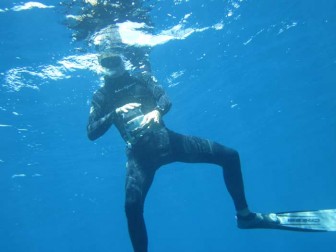
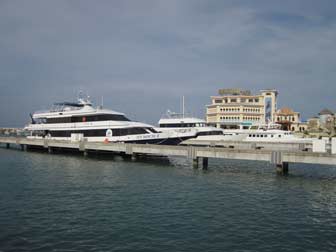
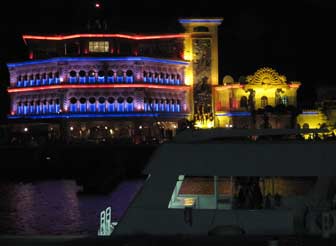
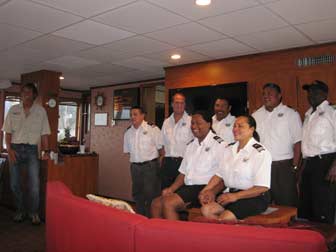
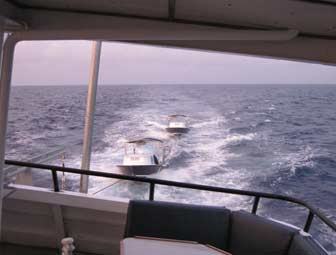
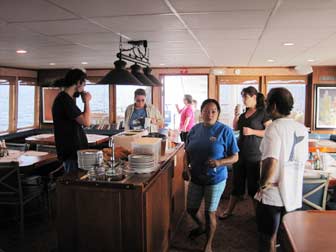
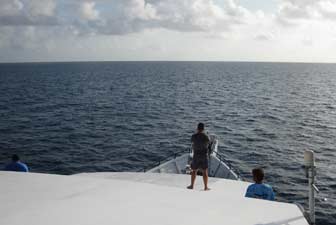
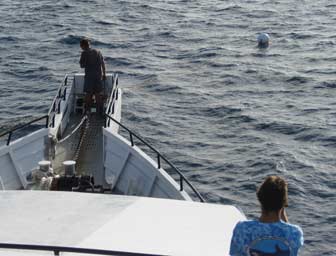
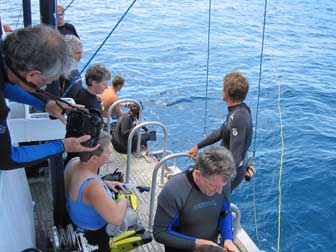
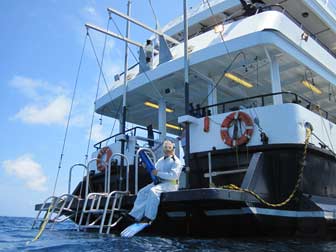
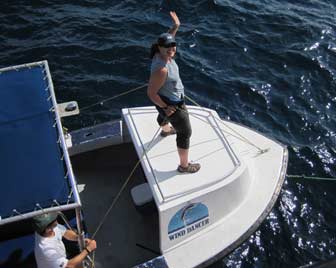
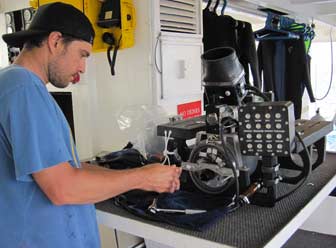
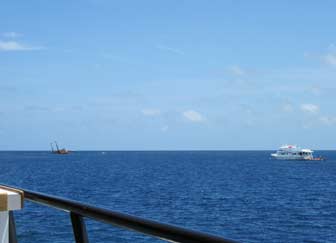
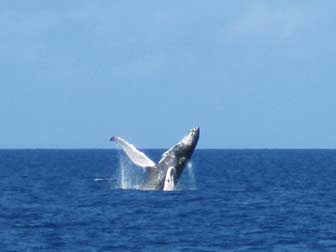
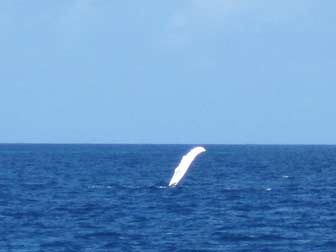
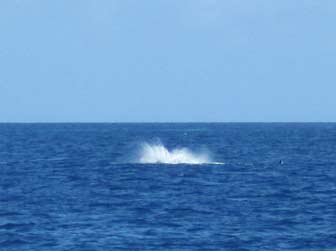
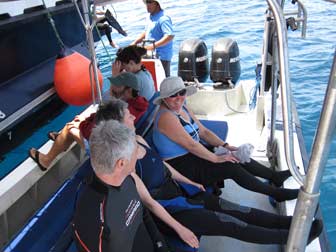
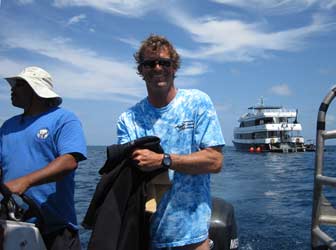
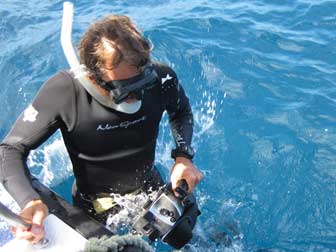
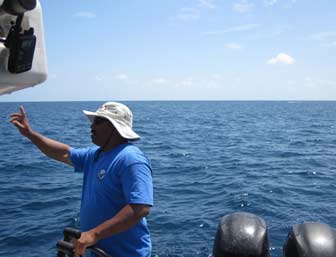
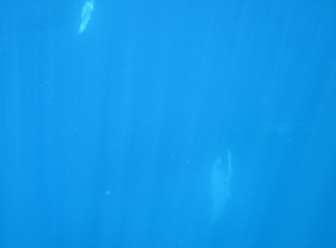
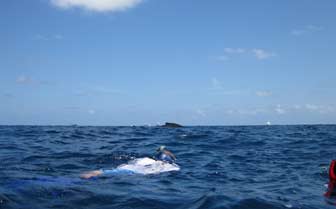
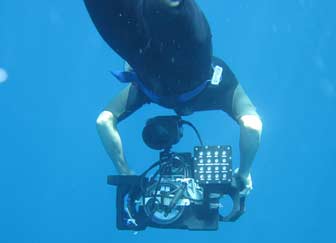
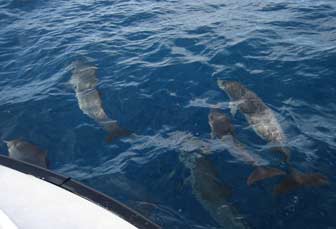
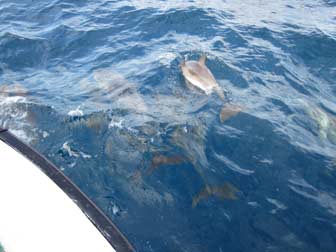
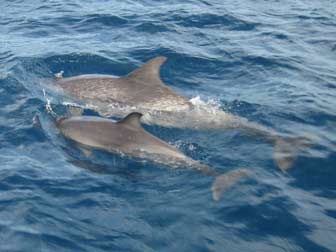
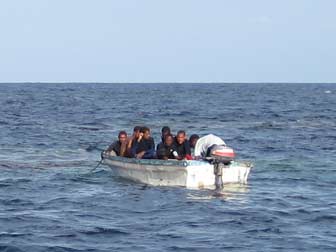
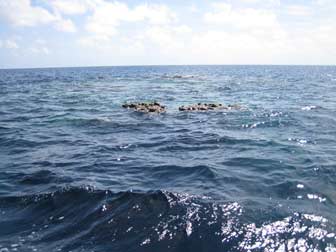
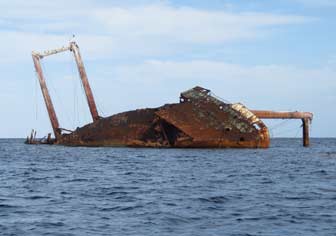
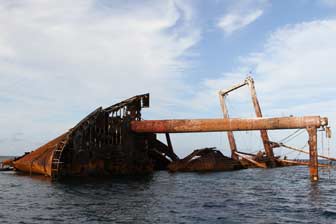
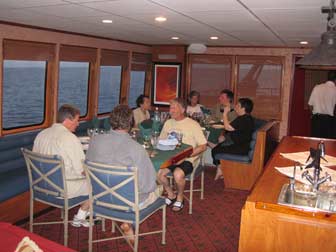
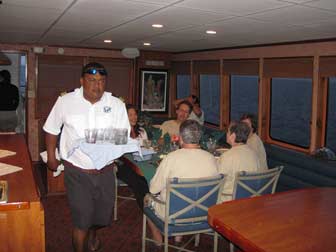
Leave a Reply
You must be logged in to post a comment.